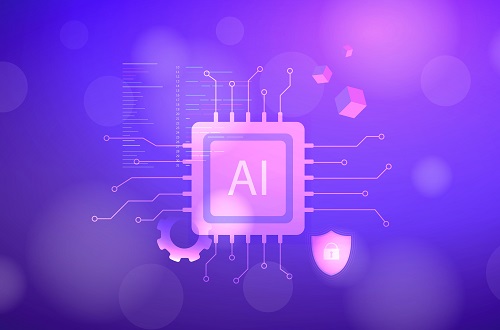As cyber threats become increasingly diverse in the way they strategically cripple organizations, the cybersecurity landscape is under increasing pressure to strengthen its technology and defense methods. Cyberattacks are only becoming more frequent year after year, with the costs for an unprepared business only rising with them.

Data breaches can hurt not only your organization’s wallet, but your reputation as well. It is therefore imperative that companies diversify into data protection, and artificial intelligence (AI) could indeed be the answer that cyber operations centers need to detect and prevent threats before they do. can cause damage.
No industry is safe
Cyberattacks are not limited to one industry. As we have seen throughout the past year, no industry is immune. In the healthcare sector alone, 20 million Americans are at risk of receiving “unsafe” healthcare after the CommonSpirit Health cyberattack in October. The major IT breach, caused by a ransomware hack, affected a system operating 140 US hospitals and more than 1,000 care sites, meaning patients in 21 states could still be at risk of receiving faulty care. Cyber actors are increasingly targeting hospitals and healthcare providers to access sensitive patient data, with critical consequences for patients, hospitals and other national healthcare systems around the world. These aggressors have no remorse; therefore, it is crucial for organizations to keep their cybersecurity up to date, especially when lives could potentially be at stake.
Likewise for telecommunications operators, governments around the world have begun to crack down on the application of cybersecurity rules to all mobile and broadband service providers. In order to protect broadband and mobile networks from potential threats, CSPs must be more vigilant in their cybersecurity or risk fines of up to $100,000 per day if they fail to comply. As governments realize the importance of investing in modern technology for data protection, businesses in all industries can benefit from updating their systems, or risk a healthy payout.
It is predicted that by 2025, cybercrimes could cost more than $10 trillion annually worldwide. This estimate is based on growing numbers, including factors such as data damage and destruction, theft of intellectual and financial property, as well as post-attack business disruption and reputational damage. Organizations need to start prioritizing identifying and preventing complex cyberattacks before they happen, which is impossible if they keep a legacy system.
Challenges with Legacy Software
For companies that rely on traditional reactive security monitoring software (as with legacy SIEM solutions), they have access to basic analysis and log data aggregation to detect cyber incidents. Unfortunately, this can be limited, as most solutions only focus on alert mechanisms to trigger once a previously known attack pattern has occurred. With the dynamically changing threat landscape, a legacy system often doesn’t provide enough organization-wide visibility and scalability to truly prevent attacks if they occur.
Cybercriminals have access to the best software available, which means that even the most advanced security software can be bypassed. Criminals can hide their activity in the hundreds of gigabytes of data collected from various log sources because legacy systems lack the ability to learn and differentiate it from common user behavior. When alerts are raised, they are also often false positives, causing real threats to slip through the cracks and be ignored completely.
Updating legacy systems is therefore imperative. Investing in modern technologies like cloud-based AI and machine learning (ML)-based threat detection can help IT managers and security operations center (SOC) analysts be much more proactive in monitoring and preventing cyber threats, automatically predicting behavior. very complex networks and computer systems.
Be proactive in detecting threats
Companies that keep their old cybersecurity systems rather than updating and modernizing their technology are becoming increasingly ineffective at preventing threats. By relying on the ability to fix problems after the damage has already occurred, they simply allow otherwise avoidable attacks to take place.
With the right AI system in place, next-gen SIEM solutions can contextualize information to predict cyber threats, rather than just detecting them at the impact stage. Additionally, multiple AI models can be used in sequence to optimize threat detection output to detect early signs of an attack. By integrating with automated data and web scrapers to incorporate the latest contextual threat information for organizations, AI-powered solutions provide the ability to adjust in near real-time to reflect actual vulnerability exposure, compromised credentials, in-context malicious domain detection, and risk exposure. from any customer. Additionally, alerts can be prioritized and adjusted based on potential impact on the organization, placing the most serious alerts at the top of the agenda.
Adopting AI in threat detection is essential
Predictive threat detection using the potential of AI is key to ensuring organizations avoid the cost of potentially damaging attacks. Dynamically evolving threats need to be combated with an equally complex and reactive prevention system, which organizations need to realize quickly to ensure that customer data remains safe and protected. AI solutions also help business leaders maintain their own peace of mind – less focus or worry about the threat of a destructive cyberattack – and instead more time and money spent to the development of the company.
Ralph Chammah is CEO and Miro Pihkanen is CSO of OwlGaze, a cybersecurity software and consulting company that offers proprietary AI software called Blacklight.
